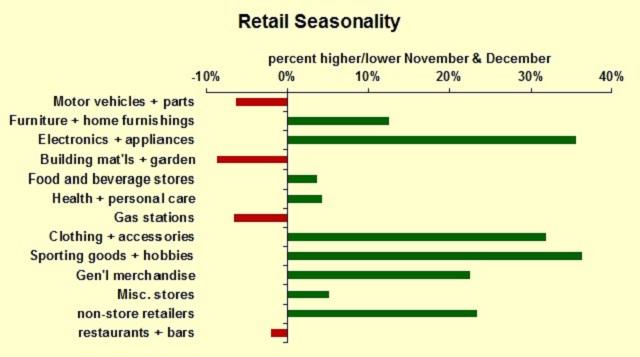Christmas is big, no doubt about it. How big depends on what type of retail. Highest honors for big holiday volume goes to sporting goods, electronics, and clothing, but general merchandise and non-store retailers (like Amazon) are close behind. Lower holiday season sales occur at car dealers, building materials stores and gas stations.
The easy way to look at how big Christmas is for retailers is through the Census Bureau’s Monthly Retail Trade Report. The data section includes seasonal factors, which show how much above or below the annual average a given month’s sales typically are. For the chart below, I averaged together November and December. General merchandise includes department stores as well as stores such as Walmart and Costco.

Retail sales data come by type of store, not type of product. Some electronics devices are sold in stores categorized as “Electronics and appliances,” but some are sold in “General merchandise,” in “Non-store retailers,” and in “Health and personal care,” which you and I call drug stores.
People in the retail industry know their own seasonal patterns pretty well, but these patterns can change. Certainly Christmas never comes in July, but a given company’s mix of products can change over time, which can affect seasonality. Even the seasonal factors for a given product can change gradually over time. In addition, different locations may have somewhat different seasonal patterns. (I once discovered that bank deposits in Oregon had a markedly different seasonal pattern than bank deposits in Washington state.) Executives looking at revenue that is highly seasonal should be cautious about their interpretations. It might be worth applying some statistics to see if experience’s lessons match the recent data.












Leave A Comment